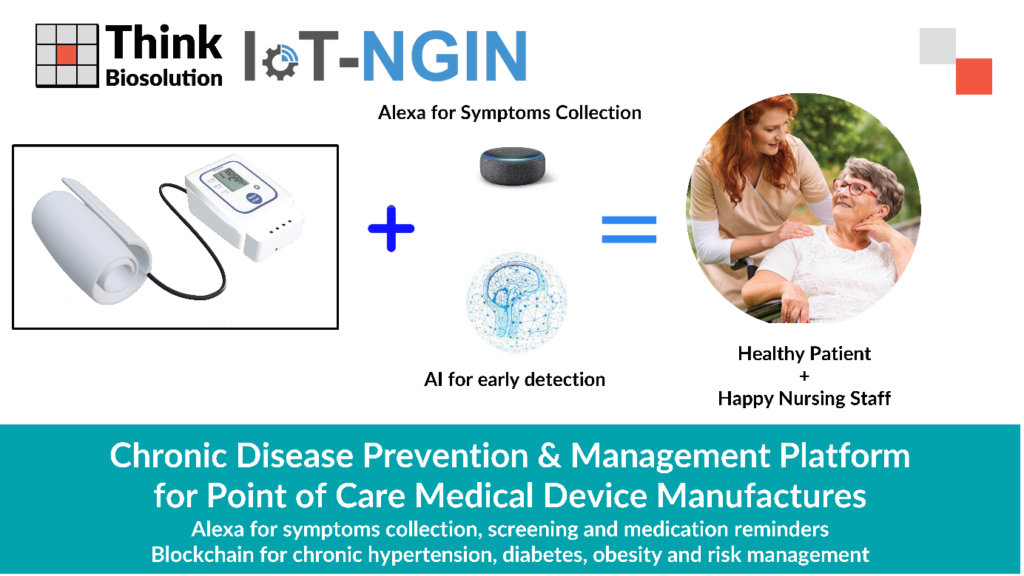Two out of three people at retirement age have at least two chronic conditions [1]. Globally, Europe has the highest burden of chronic diseases, which are responsible for 86% of all deaths [2] and a major cause of morbidity and disability estimated in disability-adjusted life-years (DALYs). QuasaR-NGIN will avoid early mortality and ensure the geriatric population live disease-free healthier independent lives.
Our QuasaR™ device is the world’s first conversational wearable medical device for chronic disease prevention. The device can collect vitals like blood pressure, heart rate, AFib detection and combines this with voice-based symptom collection to provide a 360-degree view of a patient’s health. QuasaR™ is now a closed IoT platform that is limited to chronic hypertension, cardiac and diabetes prevention.
In this project, QuasaR-NGIN will add Next Generation Internet components to the QuasaR device by embedding IoT software components. We will also deploy this new HW / SW functionality as an open-source platform and test them within the context of the IoT-NGIN pilots.
The QuasaR-NGIN will have additional components i.e.,
(1) Voice-based search and rescue powered by 5G connectivity to enable real-time communication with healthcare providers in events like stroke and fall events. This will enable patients to trigger SOS commands and therefore reduce the time of intervention. Which in turn will reduce the cost of care.
(2) Cross Blockchains/smart contracts to ensure data can be securely used by multiple healthcare providers/Electronic Health Records. In this use case, patients participating in decentralised clinical trials can give voice-based permission to CROs to use their daily data. This will reduce the cost of running clinical trials.
(3) Enhanced privacy layer ensuring that the voice-based data collected is secure.
In this use case we built an API security layer to fulfil the following needs for all API and authentication requests used by the QuasaR-NGIN platform:
– Authentication – The security layer must authenticate the users and validate their identities before allowing them to access the voice API.
– Authorisation – The security layer must determine the level of access each user has and only allow them to perform actions they are authorized to perform.
– Confidentiality – The security layer must protect the confidentiality of sensitive information, such as passwords, by encrypting data transmission.
– Data privacy – The security layer must ensure that user data is kept private and is not shared with unauthorized third parties.
– Risk assessment – The security layer must assess the potential risks associated with using the voice API and implement measures to minimize those risks.
– Compliance – The security layer must comply with relevant data protection regulations, such as the EU General Data Protection Regulation (GDPR).
QuasaR-NGIN’s value proposition to long-term care will include, (1) Free up nursing staff time – Automate up to 60% of staff work-load required to deliver Care Plan evaluation, assessment and diagnosis. (2) Enable Continuity of Care (3) Reduce Cost of Care (4) Works with existing infrastructure – Low touch and easy to use workflows that integrates with existing EHR like PointClickCare (5) Improve Rating – Improve QoPC Rating (OASIS) and Patient Surveys (HIHCAHP).
References
[1] European Commission. Europeans of retirement age: chronic diseases and economic activity. RIVM.
[2] World Health Organisation. Regional high-level consultation on noncommunicable diseases

